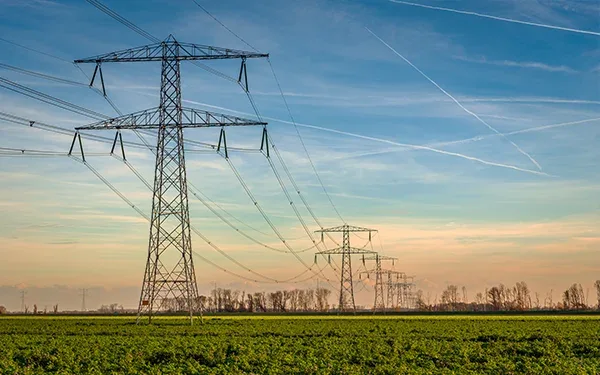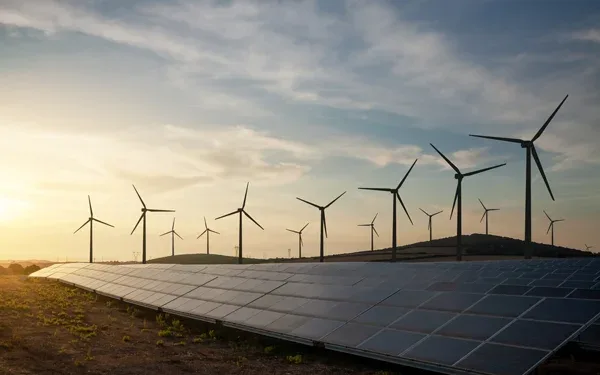Offshore wind big part of ISO’s 2023-2024 Transmission Plan
The California Independent System Operator (ISO) has posted a draft of its 2023-2024 Transmission Plan, recommending 26 new projects at an estimated cost of $6.1 billion at buildout, including the first phase of development that would bring energy generated by North Coast offshore wind to the California grid.
Continuing last year’s more synchronized and strategic approach for advancing infrastructure projects that reliably and efficiently help meet California’s clean-energy objectives over the next decade, the draft plan is scheduled to be the focus of a public stakeholder call on April 9.
Stakeholder comments on the draft plan are due by April 23, with a final version scheduled for consideration by the ISO Board of Governors at its May meeting.
The draft plan recommends 19 projects classified as “reliability-driven.” As the plan states, these are to accommodate forecasted “load growth and evolving grid conditions as the generation fleet transitions to increased renewable generation.” Estimated cost: $1.54 billion.
Most of the costs identified in the draft plan – another $4.59 billion – are from three major transmission lines that would deliver energy produced by floating wind turbines off the Coast of Humboldt County.
“These projects off California’s North Coast area represent the first wave of development for offshore wind to meet the state’s portfolio needs while also being flexible enough to expand in the future to meet any increased requirements,” Neil Millar, the ISO’s vice president for Infrastructure and Operations Planning, said.

Several smaller connector lines recommended in the draft plan would move much of that clean energy into the Bay Area. Planning done by the California Public Utilities Commission (CPUC) anticipates the first offshore wind farms to start generating power around 2034.
With buildout of the plan expected to take a decade or so, costs to consumers are projected to translate to approximately 0.5 cents per kilowatt hour over the life of the projects. The costs would be phased in through the rate-design process between utilities and their regulatory authorities as the new facilities come online.
This year’s transmission plan is based on projections provided to the ISO in 2023 by the CPUC that the state needs to add more than 85 gigawatts (GW) of new clean generating capacity identified in the CPUC’s portfolio by 2035. That target reflects greenhouse gas reduction goals and load growth including the potential for increased electrification occurring in other sectors of the economy, primarily in transportation and the building industry.
The 2023-2024 draft plan will enable critical resource development, including:
- Over 38 GW of solar generation distributed across the state in solar development regions that include the Westlands area in the Central Valley, Tehachapi, the Kramer area in San Bernardino County, Riverside County, and also in southern Nevada and western Arizona;
- Over 3 GW of in-state wind generation in existing wind development regions, including Tehachapi;
- Over 21 GW of geothermal development, primarily in the Imperial Valley and in southern Nevada;
- Access for battery storage projects co-located across the state with renewable generation projects, as well as stand-alone storage located closer to major load centers in the LA Basin, greater Bay Area, and San Diego;
- The import of over 5.6 GW of out-of-state wind generation from Idaho, Wyoming and New Mexico, by enhancing corridors from the ISO border in southeastern Nevada and from western Arizona into California load centers; and
- Over 4.7 GW of offshore wind with 3.1 GW in the Central Coast (Morro Bay call area) and 1.6 GW in the North Coast area (Humboldt call area).
The comprehensive analysis that is part of the ISO’s transmission planning process also included screening of hundreds of options and detailed assessments of alternatives in addition to the recommended projects. The alternative analysis considered transmission upgrades, preferred resources (such as storage), grid-enhancing technologies (GETs) and remedial action schemes.

In this plan, for example, a phase-shifting transformer that provides flow control is recommended for approval to increase the resiliency in the Humboldt area. The plan also includes a list showing more than a dozen such uses dating back a number of years that are either underway or already operational.
Projects recommended in this year’s plan, most notably to integrate offshore wind in the North Coast, include:
- A new Humboldt 500 kV substation complete with a 500/115 kV transformer;
- A new HVDC line (approximately 260 miles), initially operated as 500 kV AC line to interconnect the new Humboldt 500 kV substation to the Collinsville 500 kV substation;
- A new 500 kV AC line (approximately 140 miles) to interconnect new Humboldt 500 kV substation to the Fern Road 500 kV substation;
- A 115 kV line from the new Humboldt 500 kV to existing Humboldt 115 kV substation, and a 115kV/115 kV phase shifting transformer (PST) at Humboldt 115 kV substation; and
- A host of smaller upgrades improving supply of load and access to other smaller resource zones.
The first change was the proactive zonal transmission planning approach the ISO has developed in coordination with the CPUC and CEC. The approach tightens linkages between resource and transmission planning activities, interconnection processes and resource procurement so the various efforts work in concert for greater efficiency.
The second change responds to the rapid escalation in the projected resource requirements to meet California’s clean-energy policy objectives of a decarbonized grid by 2045. The projected incremental resource requirements in this year’s plan, for example, climbed fourfold compared to the 2020-2021 plan just two years earlier. The pace is accelerating in future planning cycles as well, and with California needing to add about 8,000 MW of new clean energy to the system every year for the next two decades to meet its policy objectives, closely coordinated planning between transmission, procurement, and interconnections is crucial.
The strategic intent in drafting ISO transmission plans this way is that they take into account priority zones identified in resource portfolios to develop the transmission infrastructure required and recommended for approval.
“Major transmission upgrades are complex and require a significant upfront investment,” Millar of the ISO said. “It’s crucial that we do all we can to synchronize all of our planning and resource procurement so we can get these transmission lines planned, sited and built as quickly and as cost-effectively as possible. I believe the new approach we started using last year can go a long way toward achieving those objectives.”
Once the draft transmission plan gets approved, it authorizes cost recovery for the 26 identified transmission solutions through ISO transmission rates, subject to regulatory approval. It would also initiate the ISO’s competitive solicitation process for two eligible projects under the ISO’s federal tariff.
On a parallel front, the ISO has also been working for the past year with stakeholders to improve its interconnection process so new resources can be connected in a more efficient and timely manner. A final proposal outlining recommended changes to the interconnection process was posted March 28. It is also scheduled for consideration at the Board of Governors meeting in May.


